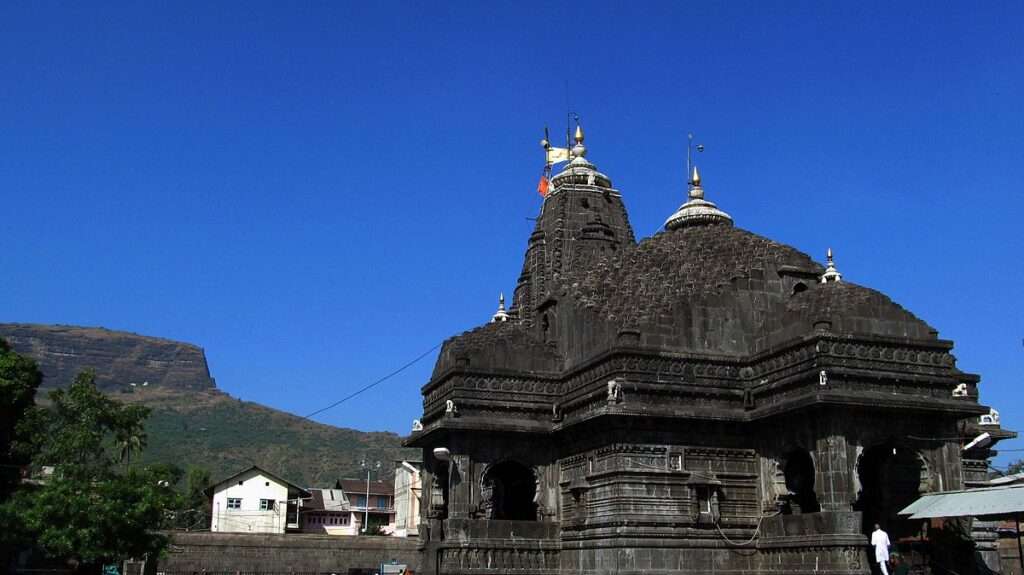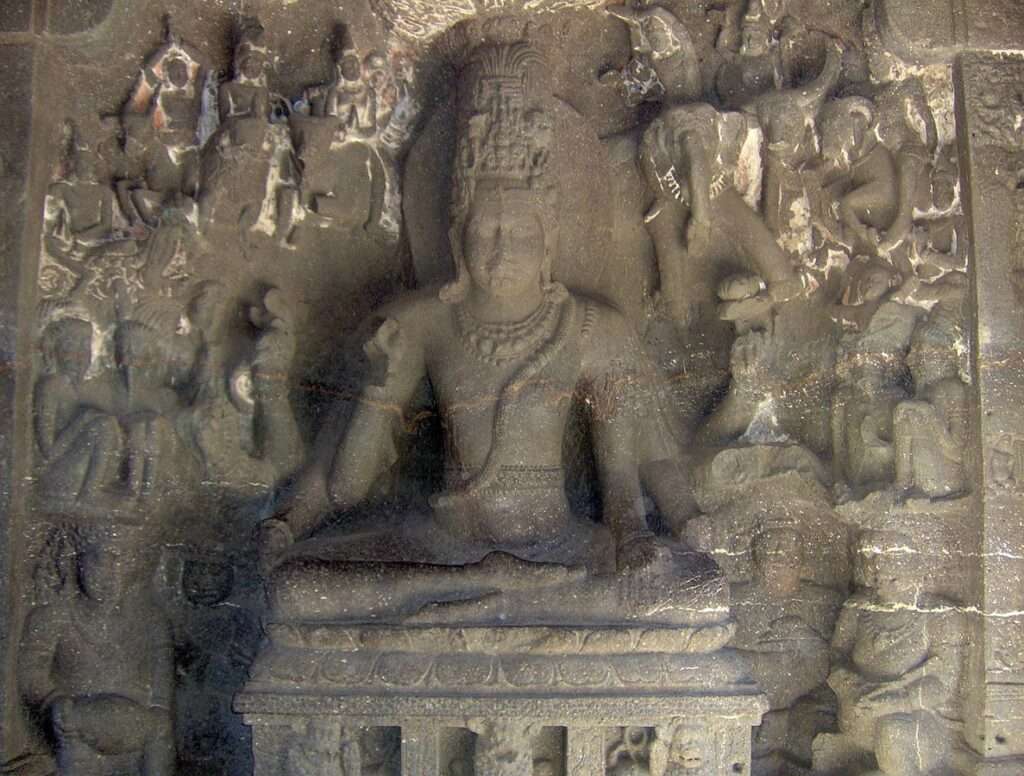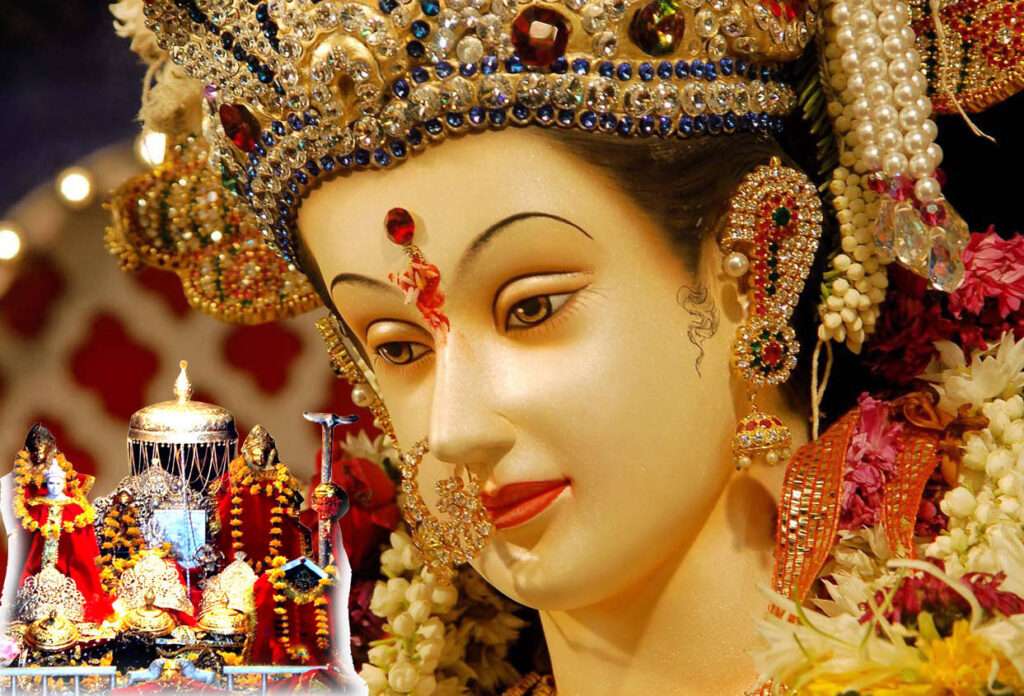Table of Contents
Introduction
Trimbakeshwar Temple is one of the most revered Hindu temples in India. It is dedicated to Lord Shiva, the supreme deity of Hinduism, and is one of the twelve jyotirlingas, or self-manifested shrines of Shiva. Located in the town of Trimbak, in the Nashik district of Maharashtra, the temple is surrounded by three hills: Brahmagiri, Nilagiri and Kalagiri. The temple is also the source of the Godavari river, the second longest river in peninsular India. In this blog post, we will explore the history, architecture, significance and rituals of this ancient temple.
History of Trimbakeshwar Temple
The history of Trimbakeshwar Temple dates back to ancient times, when it was associated with many legends and myths. According to the Shiva Purana, one of the sacred scriptures of Hinduism, once Brahma (the god of creation) and Vishnu (the god of preservation) had an argument about who was superior. To settle their dispute, Shiva (the god of destruction) appeared as a pillar of light and challenged them to find its beginning and end. Brahma took the form of a swan and flew upwards, while Vishnu took the form of a boar and dug downwards. However, neither of them could find the end of the pillar. They realized their folly and accepted Shiva as the supreme god. Shiva then manifested himself as a jyotirlinga at twelve places in India, one of which was Trimbak.
Another legend relates to Sage Gautama, who lived on the Brahmagiri hill with his wife Ahalya. He performed severe penance to please Shiva and Ganga (the goddess of the river). As a result, Ganga descended on the hill and flowed as Godavari river. However, Gautama was accused of killing a cow by some other sages, who cursed him to suffer from leprosy. To get rid of his sin, Gautama worshipped Shiva and requested him to stay on the hill as a jyotirlinga. Shiva agreed and also blessed Gautama with a son named Shatananda.
The present temple was built by Peshwa Balaji Baji Rao, the third prime minister of the Maratha Empire, in the 18th century. He constructed the temple on the site of an old temple that was destroyed by Mughal ruler Aurangzeb. He also built a stone wall around the temple and a pond called Amritavarshini in the premises.
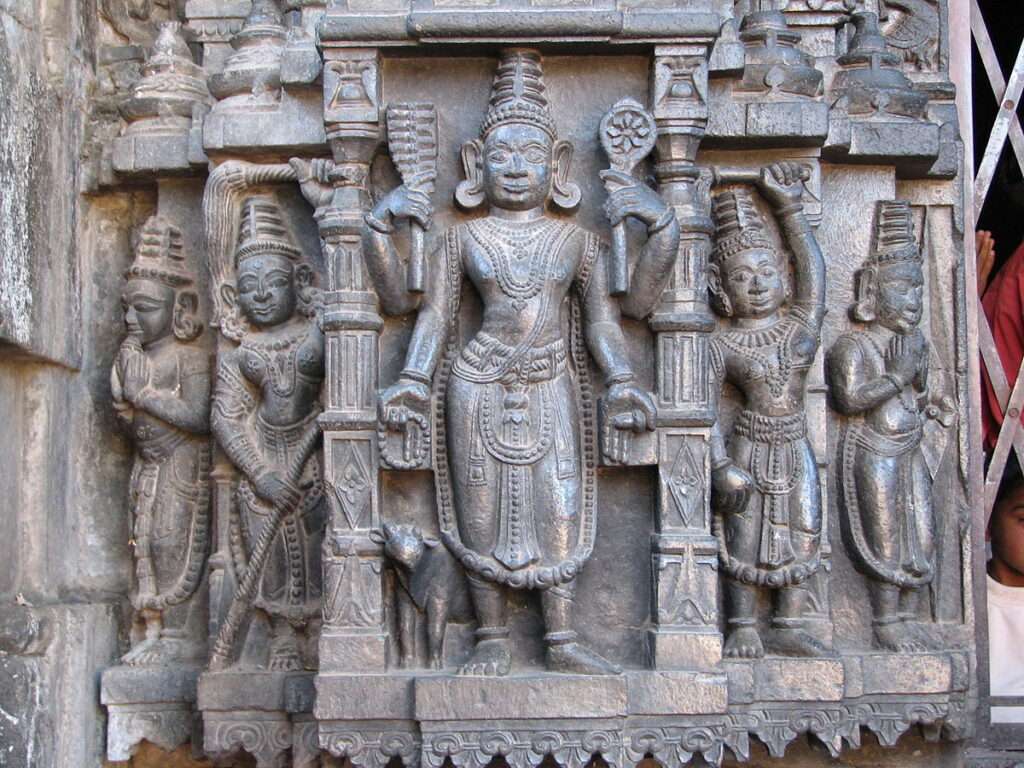
Story of Trimbakeshwar jyotirlinga
If you are a devotee of Lord Shiva, you might have heard of the 12 jyotirlingas, which are the most sacred shrines dedicated to him. One of these jyotirlingas is located in Trimbakeshwar, a town in Maharashtra, near the source of the Godavari river. In this blog post, we will explore the story and significance of this ancient temple.
The word jyotirlinga means “the radiant sign of Shiva”. According to Hindu scriptures, there are 12 places where Shiva manifested himself as a pillar of light, and these places are revered as jyotirlingas. Each jyotirlinga has a unique feature and a legend associated with it.
The Trimbakeshwar jyotirlinga is unique because it has three faces representing the Hindu trinity of Brahma, Vishnu and Shiva. The linga is made of black stone and is adorned with a crown studded with precious stones. The crown is said to be from the age of Pandavas and is displayed only on special occasions.
The legend behind the Trimbakeshwar jyotirlinga involves the sage Gautama and his wife Ahalya. They lived on the Brahmagiri hill and were blessed by the gods with abundant food and water. However, other sages were jealous of them and sent a cow to destroy their crops. When Gautama tried to chase away the cow, it died accidentally. The sages accused Gautama of killing a holy animal and cursed him with a sin.
To get rid of the sin, Gautama worshipped Shiva and requested him to release the river Ganga from his matted locks. Shiva agreed and Ganga flowed down from the hill, creating a sacred pond called Kushavarta. Gautama bathed in the pond and was purified of his sin. He also asked Shiva to stay there as a jyotirlinga, which Shiva accepted.
The Trimbakeshwar temple was built by the Peshwa Balaji Baji Rao in the 18th century, after the original temple was destroyed by Aurangzeb. The temple is built in the Nagara style of architecture and has a spacious courtyard. The temple also houses the genealogy registers of many Hindu families, who visit the temple to trace their ancestry.
The Trimbakeshwar jyotirlinga is one of the most revered and visited temples in India. It attracts millions of pilgrims every year, especially during the festivals of Mahashivaratri, Kumbh Mela and Shravan month. The temple is also known for its scenic location amidst the Sahyadri mountains and the holy Godavari river.
You can also explore other nearby attractions such as Nashik, Panchavati, Anjaneri and Saptashrungi. Trimbakeshwar is a place where you can experience the divine presence of Shiva and his blessings.
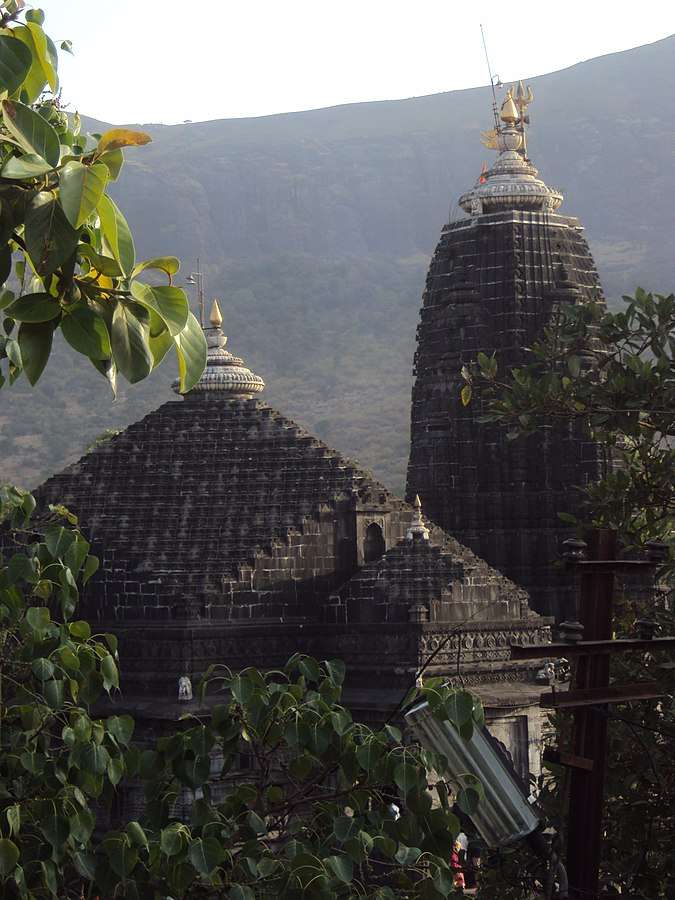
Architecture of Trimbakeshwar Temple
The temple is made of black stone and has a simple but elegant structure. It has four entry gates on each side: east, west, south and north. The east gate is the main entrance that leads to a queue for devotees. The temple has three lingas (iconic forms of Shiva) representing Shiva, Vishnu and Brahma. The lingas are covered with a silver crown that has images of various deities such as Ganga, Jaleswara, Rameswara, Gautameswara, Kedarnatha, Rama, Krishna, Parashurama and Lakshmi Narayana. The crown is displayed only on Mondays and during festivals.
The temple also has a spacious hall called Sabha Mandap where devotees can meditate and worship. In front of the hall, there is a white marble statue of Nandi, the bull vehicle of Shiva. It is believed that if one whispers his or her wish in Nandi’s ear, he will convey it to Shiva.
The temple premises also have several monasteries and samadhis (memorials) of saints who lived and worshipped here. Some of them are Nivruttinath, Gyaneshwar, Eknath and Sopandev.
Significance of Trimbakeshwar Temple
Trimbakeshwar Temple is considered to be one of the most sacred places for Hindus. It is believed that visiting this temple can grant salvation from the cycle of birth and death. It is also said that bathing in the Godavari river here can wash away one’s sins and cure diseases.
The temple is also famous for its genealogy registers that record the ancestral history of Hindu families for thousands of years. These registers are kept by a group of priests called Purohits who have been authorized by the temple trust to perform various rituals for devotees.
One of the most important rituals performed at this temple is called Narayan Nagbali, which is done to pacify the souls of ancestors and remove the effects of bad karma. It involves offering a sacrificial snake made of wheat flour to a fire pit and then immersing it in the Godavari river. Another ritual is called Kalsarpa Shanti, which is done to nullify the negative influence of the planets Rahu and Ketu in one’s horoscope. It involves worshipping Shiva and performing a puja with a silver snake.
The temple also celebrates many festivals throughout the year, such as Maha Shivaratri, Shravan Maas, Kumbh Mela and Tripuri Purnima. During these occasions, the temple is decorated with lights and flowers and attracts thousands of pilgrims from all over the country.
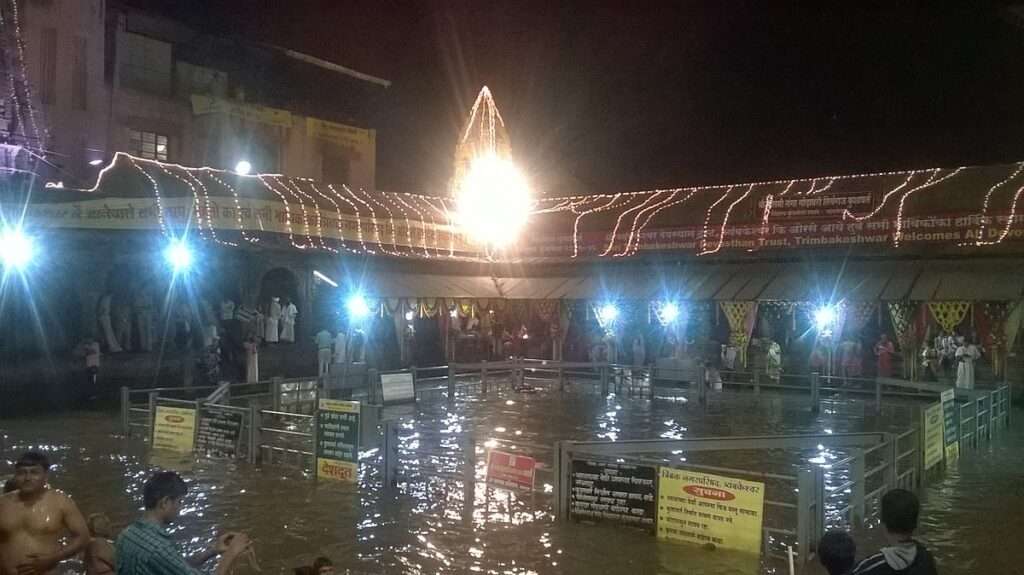
How to Reach Trimbakeshwar Temple
Here are the ways to reach Trimbakeshwar from major cities of India:
By Train
- The nearest railway station to Trimbakeshwar is Nashik Road Railway Station, which is 30 kilometers away. Trains from major cities like Mumbai, Pune, Delhi, Hyderabad, and Chennai connect to Nashik Road Railway Station.
- You can also take a train to Devlali Railway Station, which is 41 kilometers away from Trimbakeshwar. From Devlali, you can take a bus or taxi to reach Trimbakeshwar.
By Bus
- There are direct buses from major cities like Mumbai, Pune, Aurangabad, and Nagpur to Trimbakeshwar. You can also take a bus from Nashik Road Railway Station to Trimbakeshwar.
By Flight
- The nearest airport to Trimbakeshwar is Chhatrapati Shivaji Maharaj International Airport, which is 166 kilometers away in Mumbai. From Mumbai, you can take a taxi or bus to Nashik and then a bus or taxi to Trimbakeshwar.
By Road
- Trimbakeshwar is well connected by road to major cities in Maharashtra. You can drive your own car or take a bus or taxi to reach Trimbakeshwar.
Here are the distances and travel times from major cities to Trimbakeshwar:
| City | Distance (km) | Travel Time (hrs) |
|---|---|---|
| Mumbai | 166 | 3 |
| Pune | 198 | 4 |
| Aurangabad | 159 | 3 |
| Nagpur | 237 | 4 |
| Delhi | 784 | 12 |
Frequently Asked Questions
Trimbakeshwar is one of the 12 jyotirlingas in India, which are the most sacred shrines of Lord Shiva. It is located in the town of Trimbak, near Nashik in Maharashtra. The temple is situated at the source of the Godavari river, which is also known as Gautami Ganga. Here are some of the frequently asked questions about this holy place.
Q: What is special about Trimbakeshwar jyotirlinga?
A: The speciality of Trimbakeshwar jyotirlinga is that it has three faces, representing the Trinity of Hinduism – Brahma, Vishnu and Shiva. It is also the only jyotirlinga where the linga is placed in a depression on the floor, instead of on a pedestal. The linga is adorned with a jewelled crown, which is said to be from the age of Pandavas.
Q: How to reach Trimbakeshwar temple?
A: Trimbakeshwar temple is about 28 km from Nashik city and 40 km from Nashik road railway station. One can take a bus, taxi or auto rickshaw from Nashik to reach Trimbak. The nearest airport is Mumbai, which is about 200 km away.
Q: What are the timings and rituals of Trimbakeshwar temple?
A: The temple opens at 5:30 am and closes at 9 pm. The main rituals are Abhishekam (bathing the linga with water, milk, honey, etc.), Rudrabhishekam (chanting of Rudra mantra), Laghurudra (recitation of Vedas), Mahapuja (offering of flowers, fruits, etc.) and Mahamrityunjaya Jaap (chanting of Mahamrityunjaya mantra). These rituals can be performed by devotees by paying a fee to the temple trust. The timings and charges vary depending on the type and duration of the ritual.
Q: What are the festivals and events celebrated at Trimbakeshwar temple?
A: Some of the major festivals and events celebrated at Trimbakeshwar temple are Maha Shivaratri (the night of Shiva), Shravan Maas (the month of Shiva), Kumbh Mela (the largest religious gathering in the world), Sinhastha Parvani (the auspicious days during Kumbh Mela), Nivruttinath Jayanti (the birth anniversary of Nivruttinath, the elder brother of Sant Dnyaneshwar) and Narayan Nagbali (a ritual to free oneself from ancestral curses).
Q: What are the other attractions near Trimbakeshwar temple?
A: There are many other places of interest near Trimbakeshwar temple, such as Brahmagiri hill (the origin of Godavari river), Anjaneri hill (the birthplace of Lord Hanuman), Gangadwar (the place where Godavari river emerges from a cow’s mouth), Kushavarta kunda (the sacred pond where Godavari river flows), Gajanan Maharaj Sansthan (a spiritual centre dedicated to Gajanan Maharaj), Shiv Jata Mandir (a temple with a huge sculpture of Shiva’s matted hair) and Nilambika Temple (a temple dedicated to Goddess Parvati).
Also Read:
Somnath Temple: The first Jyotirlinga of India
